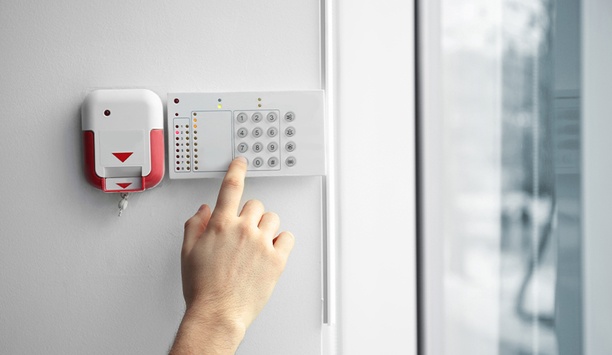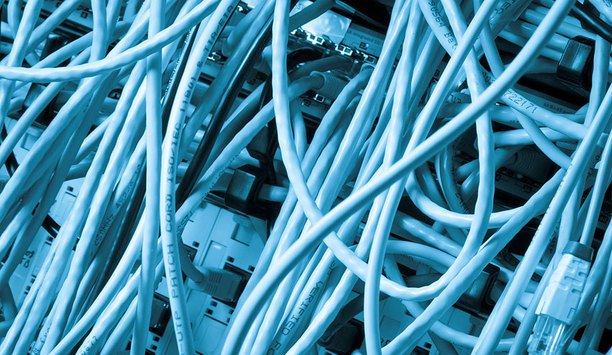With the increasing number of campus shootings and lockdowns, security is a top priority for schools. Decision-makers are looking to repair the inefficient security measures on campuses by either upgrading their current systems or installing state-of-the-art technologies to enhance situational awareness.
Traditionally, security personnel have relied on video as the primary method of monitoring. However, this strategy is outdated, similar to how watching silent movies is now obsolete. A security team who solely uses video to evaluate a situation is left with data that is limited and many times inconclusive. Only with the integration of audio into existing security systems is a security officer able to fully understand the gravity of a situation and be better equipped to respond to the danger.
Many leaders in the education sector have begun to emphasize the importance of adopting audio in monitoring programs and security protocols including Guy Grace.
Grace is an industry veteran with over 31 years of security experience. He is a Steering Committee Director for PASS, the Partner Alliance for Safer Schools, as well as the Director of Security & Emergency Preparedness for Littleton Public Schools.
“Sound and sight are the new dynamics in school surveillance so to say,” Grace said. “I look at it as we need both.”
The security director also affirmed that audio monitoring, especially when conducted through two-way solutions, is a great tool to provide accountability.
“All of your first customer service interaction between your office staff and your visitors starts there at that intercom. Sometimes in very rare situations, it can get volatile,” Grace explained. “So it’s good to have, for those types of situations, the ability to hear and record what’s going on at your key customer service points.”
Benefits Of Audio On Campus
When audio is paired with video, security needs are met and additional evidence is gained. Integrating microphones with cameras gives staff access to more details about a suspect or scene. Voices, names, languages spoken and directives are just a few examples of what information can be aggregated. This additional data is crucial for first responders as they assess the suspect’s intentions and threat level.
 |
| When audio is paired with video, security needs are met and additional evidence is gained |
Video cameras are effective surveillance tools, but they are not able to capture everything. A small school may only have a few cameras installed throughout their grounds, creating surveillance blind spots for select buildings or areas. Meanwhile, a large entity, such as the Los Angeles Unified School District, which has over 900 schools, has hundreds of cameras. These cameras cannot be monitored at all times. In both cases, deploying audio solutions would automatically flag incidents not caught on camera, as well as alert central station guards of what surveillance zones need to be closely monitored.
Dissuading Young Offenders
Beyond detection, audio monitoring creates opportunities for prevention. In a situation where a rowdy teen walks onto school property after hours, a two-way audio unit allows security to speak to an individual remotely in real-time. Having the ability to communicate in real-time can be a powerful warning that dissuades a trespasser from vandalising the property or committing other offences.
Conflict Resolution
Conflict resolution is another key benefit of audio monitoring. Bullying is one of the most prevalent issues concerning school communities today. According to the National Center for Education Statistics, about 22 percent of students ages 12-18 reported being bullied at school. Installing microphones at a school’s key traffic or interaction points provides accountability by documenting what is said, which can then be used to resolve disputes or placate verbally hostile individuals.
Audio Analytics For Aggression Detection
In addition to audio monitoring equipment, school administrators should also consider deploying audio analytics solutions. Specifically, aggression and gunshot detection are some of the best security tools in the campus security market when it comes to detection, intervention and deterrence. They are the next generation of monitoring; equipping security teams with critical information and enhancing perimeter security.
Aggression detectors are capable of accurately recognizing duress in a person’s voice. The software automatically and objectively detects the presence of rising human aggression, anger or fear, and subsequently warns staff by a visual alert or alarm trigger. As a result, end users can identify high-risk situations in real-time and prevent acts of physical aggression before they happen.
"Audio analytics solutions are the next generation of monitoring; equipping security teams with critical information and enhancing perimeter security" |
A gunshot detector recognises firearm discharge from various firearms in different settings. Within seconds of a gunshot, the software accurately classifies and triggers an immediate notification through a designated VMS. Security staff can then verify the alert, effectively reducing the reaction time of first responders.
Audio Monitoring: Privacy Best Practices
The benefits of integrating audio monitoring and sound detection into a school security solution are clear, but before any administration implements these systems, they need to understand the correlation between monitoring and privacy. The federal law indicates that when there is no expectation of privacy, such as in a public place, monitoring is supported. What school administrations need to focus on as they deploy surveillance solutions, is removing the expectation of privacy. Here are few best practices.
- Post clearly visible signage stating that audio and video surveillance are taking place on the premises. Typical places for mounting these signs can include school fences, main entrances and the main office.
- Notify students that the school is under surveillance by stating it in the student code of conduct. This increases awareness and reduces a school’s liability should an individual claim he or she did not see a sign on campus.
- Remind school staff of the purpose of the monitoring equipment. Reiterate that security personnel will only use audio to investigate and resolve wrongdoings so as to enhance the safety of staff and students.
Conclusion
Audio monitoring is quickly gaining attention in the education sector. It is a technology that is a cost-effective add-on to an existing system, making it an affordable solution. Moreover, audio yields a high return on investment, and for that reason, we will likely see schools across the country continue to adopt it.

























